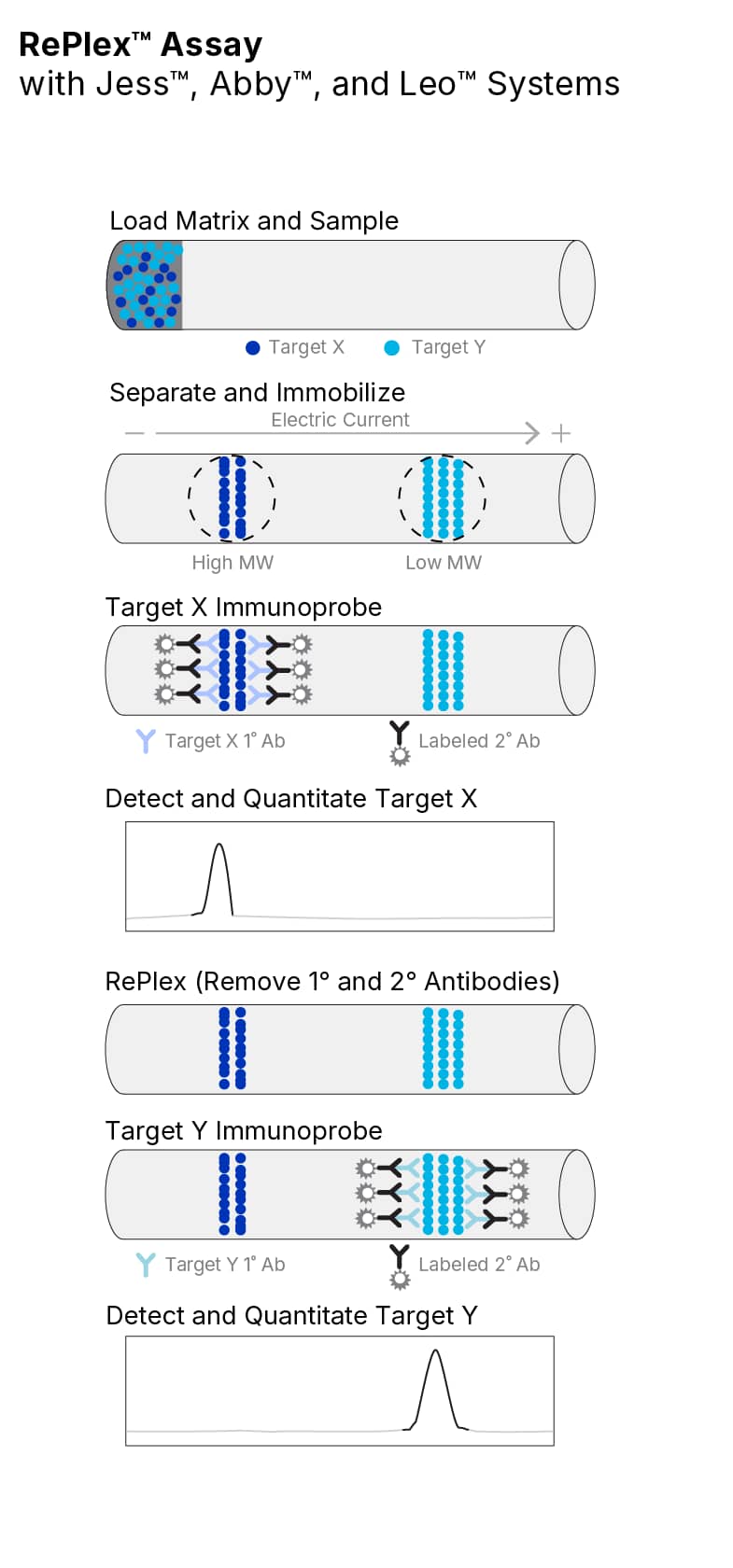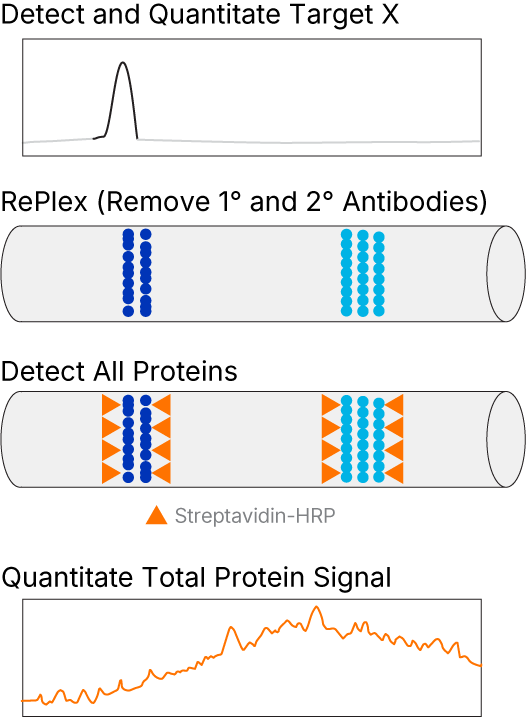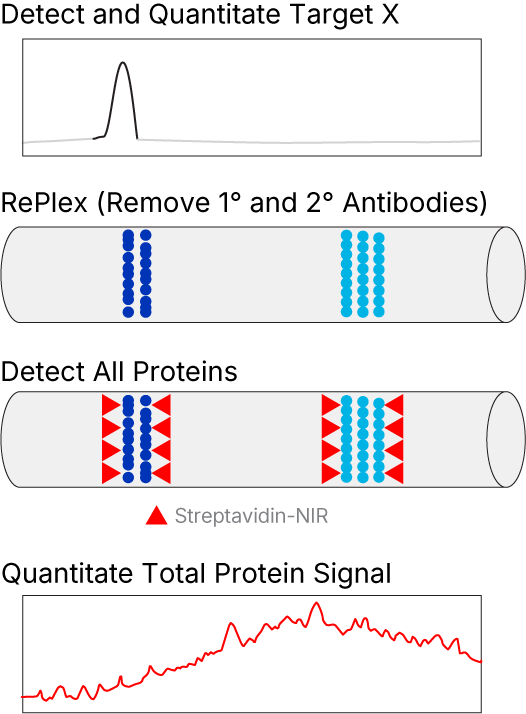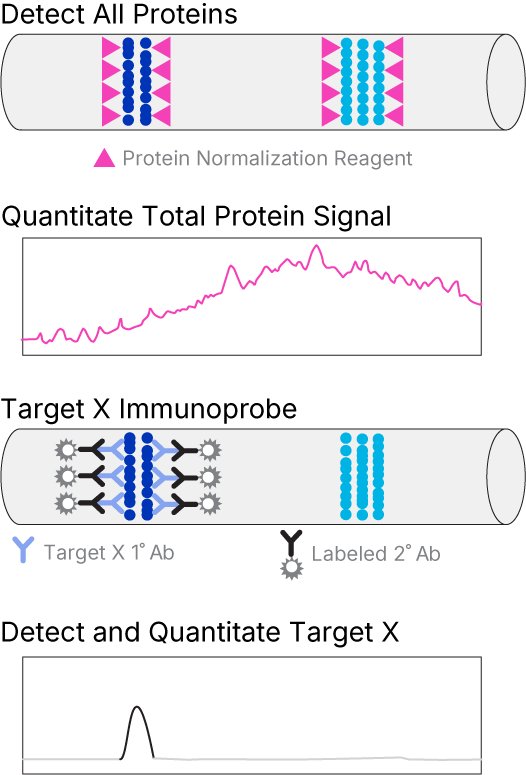Multiplex Assays on Simple Western
There are several techniques that can be used to gain protein expression data from multiple protein targets from small sample volumes using Simple Western™ Technology. Simple Western assays allow for more efficient use of small sample volumes (e.g., 3 µL) compared to traditional western blotting, enabling simultaneous analysis of multiple protein targets, isoforms, and sizes. These method described below provide quantitative results with minimal hands-on time, using both fluorescent and chemiluminescent detection to maximize data points from a single sample, including protein normalization.
Multi-channel Detection | RePlex: Automated Strip and Reprobe | Resample Up to Four Times | Multiplex with Total Protein Normalization
Multi-channel Detection
Simple Western gives you high quality, size-based data in just three short hours with only one hour of hands-on time. Multiplex in one capillary with sensitive chemiluminescence and fluorescence NIR/IR channels and detect up to 8 targets per sample.
Chemiluminescence Detection
Jess, Abby, and Leo provide sensitive chemiluminescence detection, enabling size-based multiplex western analysis of targets with non-overlapping molecular weights.
Fluorescence NIR/IR Detection
Jess provides additional fluorescence NIR/IR detection, enabling multi-channel multiplex fluorescence western analysis for targets of overlapping molecular weights.

RePlex: Automated Strip and Reprobe
With the RePlex Module on Jess, Abby, and Leo, you can run two immunoassays within the same capillary, providing multiplex readouts to get all your rich protein characterization data from just one sample, one capillary.
- Quantify phosphorylated target and total target isoform ratios
- Normalize with total protein detection in the same capillary
- Greater flexibility in immunoprobe selection
- More data points per sample
- Save time and money on consumables
Resample Up to Four Times
Simple Western Leo allows for the automatic re-sampling or use of the same sample for multiple runs, which enhances experimental efficiency. You can set up experiment to measure the expression or levels of different target proteins from a single sample by using different capillaries. Leo, the largest Simple Western Instrument utilizes 25-100 capillaries to run 25-100 samples per run enabling the detection of up to 8 protein targets per sample. Each sample can be re-sampled up to 4 times and analyzed in separate capillaries. This ability to perform multiple analyses from the same sample reduces sample consumption and minimizes the need for repetitive sample preparation, while still providing accurate, quantitative data for various protein targets in a streamlined and automated process.
TPN using the RePlex Module and Chemi Detection
TPN using RePlex and Chemi detection allows total protein detection following RePlex to remove antibodies from an immunoassay with chemiluminescent or fluorescent probes.
TPN using the RePlex Module and NIR Detection
TPN using RePlex and NIR detection allows total protein detection following RePlex to remove antibodies from an immunoassay with chemiluminescent or fluorescent probes.
TPN using the RePlex Module and PN Detection
TPN using RePlex and NIR detection allows total protein detection following RePlex to remove antibodies from an immunoassay with chemiluminescent or fluorescent probes.
Request Information: Learn more. Get a quote.



